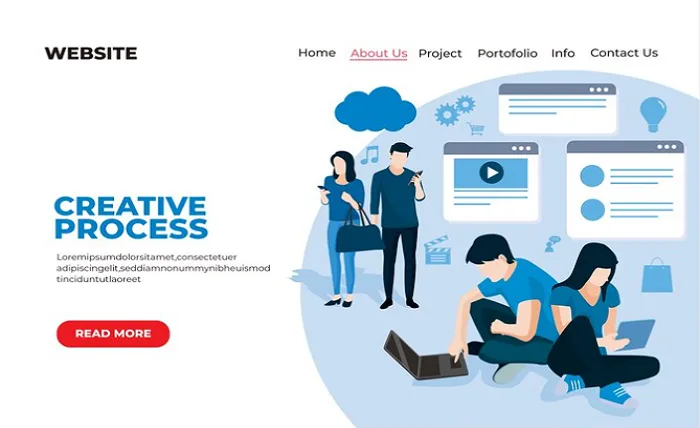Where every click counts in the fast-paced digital era, the design of your B2B website plays a pivotal role in fostering meaningful connections with your target audience. A well-crafted web page goes beyond aesthetics; it serves as a virtual ambassador for your firm, shaping perceptions and driving engagement. This article delves into the essentials of B2B website design, exploring key elements that contribute to effective communication in the online realm.
Table of Contents
Understanding the Digital Landscape
Before delving into the specifics, it’s crucial to grasp the dynamic nature of the digital landscape. The website is often the first point of contact between your business and potential clients. Therefore, it’s not just a platform but a strategic tool that can make or break your online presence.
Strategic Navigation for Seamless User Experience
The journey a visitor takes on your website should be intuitive and seamless. Strategic navigation is the cornerstone of a positive user experience. Implementing clear and concise menus, strategically placed call-to-action buttons, and a logical flow of information can guide users effortlessly through your site. This enhances user satisfaction and ensures that important information is readily accessible.
Mobile Responsiveness: Catering to On-the-Go Professionals
In an era where smartphones dominate, mobile responsiveness is non-negotiable. B2B professionals are constantly moving, and your website must adapt to various screen sizes without compromising functionality or visual appeal. A mobile-friendly design ensures that your audience can conveniently engage with your content, whether at their desks or on the go.
Compelling Visuals: Capturing Attention at First Glance
Visual elements are powerful communication tools. Engaging images, infographics, and videos not only break up the monotony of text but also convey complex information in a digestible manner. High-quality visuals that align with your brand create a lasting impression, making your webpage memorable and visually appealing.
Content Clarity: The Art of Communicating Value
Clarity is paramount in B2B communication. Your website content should be concise, informative, and tailored to your target audience. Clearly articulate your value proposition, showcasing how your products or services address the specific needs of your clients. Avoid jargon and industry-specific language that may alienate potential customers. Instead, opt for a language that resonates with your audience and straightforwardly communicates value.
Building Trust with Testimonials and Case Studies
Trust is the bedrock of any successful B2B relationship. Incorporating testimonials and case studies into your website design provides real-world evidence of your capabilities and builds trust with potential clients. Authentic success stories demonstrate your expertise and the tangible results you’ve achieved for others, instilling confidence in your prospects.
Interactive Elements: Fostering Engagement
Interactive elements on your website, such as quizzes, polls, or interactive infographics, can transform passive visitors into engaged participants. This enhances user experience and provides valuable insights into your audience’s preferences and needs. Interactive content invites visitors to actively participate, creating a more memorable and engaging online experience.
Data Security: Prioritising Client Confidentiality
In the B2B realm, where sensitive information is often exchanged, prioritising data security is non-negotiable. Clearly communicate your commitment to client confidentiality and data protection on your website. Implementing secure protocols like HTTPS and showcasing trust badges can reassure visitors that their information is handled carefully.
Conclusion
Crafting a B2B website design that effectively communicates with your audience is an ongoing process. By understanding the digital landscape, prioritising strategic navigation, embracing mobile responsiveness, incorporating compelling visuals, ensuring content clarity, building trust through testimonials, integrating interactive elements, and prioritising data security, you can elevate your digital presence and forge lasting connections with your target audience. Remember, your website is not just a digital storefront; it’s a dynamic tool for communication and engagement in the competitive landscape of B2B relationships.



